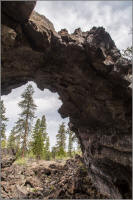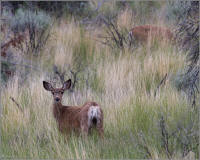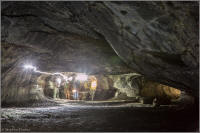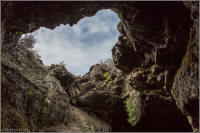Picture of the week
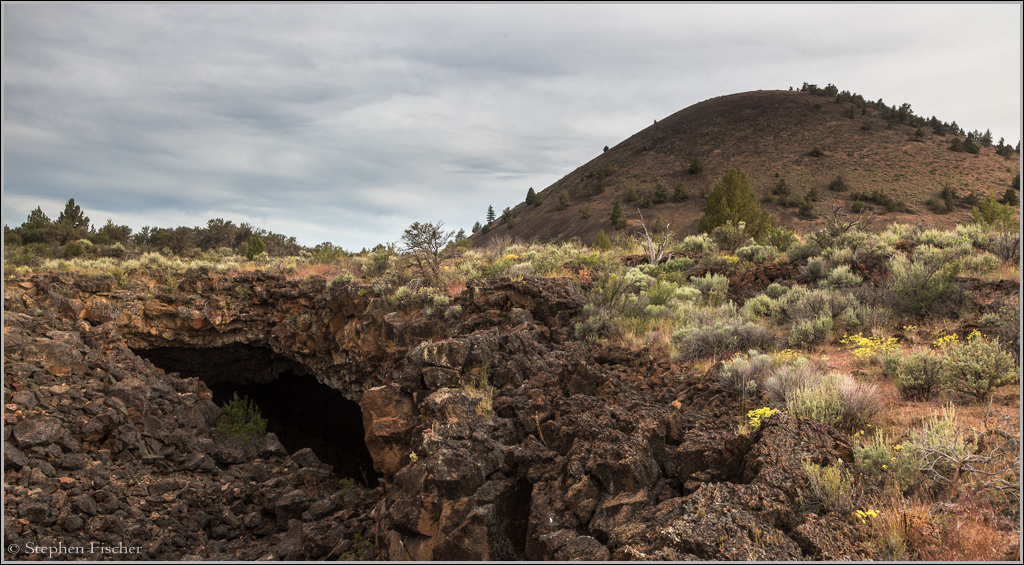
Big Painted Cave
The Big Painted Cave entrance of Lava Beds National Monument with one of the cinder cones, Schonchin Butte in the background. Captured in the morning light with slightly overcast skies at the edge of a collapsed lava tube that this cave is part of. Lava Beds is located toward the more remote northeast corner of California. The landscape of this national monument appears quite inhospitable, covered in lava fields about 32,000 years old. According to the park service guide, there are over 700 lava tube based caves in this park. These tubes were created by molten lava running on the surface down the slope of the erupting volcano. As the lava cooled, the roofs solidified first while the lava at the interior continued to flow and push forward like so many capillaries across the skin of the terrain.
Before the white settlers arrived in the 1820s, the Modoc Indian treated these lands including the Tule Lake area as their territory and home. The last of them under the leadership of a famous Modoc Kientpoos, nicknamed Captain Jack, put up a heroic fight with a 150 men, women, and children to hold off the US calvary with a force of over 10x the size of the indian's force. Despite the manpower and use of much more modern artillery, it took over 5 months to defeat the Modoc in 1873. The Modoc used their intimate knowledge of this natural and difficult terrain to their advantage for creating effective defensive positions, resulting in significant loss of life for the US soldiers (35 dead, 20 wounded). See this link in Wikipedia on the Modoc War for more information. This historic skrimish can also be viewed as an example still relevant to more contemparary times, exemplifying what a determined and indigenous people can do when fighting for their homeland, knowing that they have nothing left to lose. For the US, this war was costly at $400,000 at the time, where if they had agreed to buy the land the Modocs requested for their reservation, it would have only costed $20,000 (which was originally stolen by settlers from the Modocs in the first place). One needs to look no farther than one of half a dozen countries in the Middle East for similar examples where the path of greed, war, and oppression has been chosen over charity, diplomacy, and fairness. It make one wonder how little man has learned over the years in failed military campaigns, the size of the forces required, and cost that they have incurred.
I visited Lava Beds this last May during my travels through this area on a return trip from Oregon. Staying at the campground overnight gave me more time and flexibility to explore the more subtle aspects of this remote national monument. Besides the dozens of caves open for exploration, the surrounding landscape can also be facinating to see. There are also a number of petroglyphs and pictographs spread about this region as created by the earlier ancestors of the Modoc and Klammath indians (see this link from the NPS for more info). Bring a headlamp and a light jacket when exploring the caves, as they can be quite cold, and some can require crawling to get through the tighter passages. When visiting these a few decades earlier, the floors of some of them were covered in ice. Today that will be as hard to find as a political tea party member that will admit humans have been a significant contributor to climate change.
The park service rangers here are also particular about visitors checking in first at the visitor center, collecting the $15 park fee, and getting briefed about the white-nose bat syndrome before exploring any of the caves. This disease is wiping out huge quantities of bats on the east coast, so there is concern that people may inadvertently introduce the fungus on their boots or other artifacts to the various caves found here, and infecting the local bat population.
All content and images are property of Stephen Fischer Photography, copyright 2010-2015. Last updated: 10/11/2015 ()
 Sept
20, 2015
Sept
20, 2015 Sept
13, 2015
Sept
13, 2015 Sept
6, 2015
Sept
6, 2015 July
19, 2015
July
19, 2015 July
5, 2015
July
5, 2015 May
31, 2015
May
31, 2015 May
3, 2015
May
3, 2015 April
26, 2015
April
26, 2015 Apr
5, 2015
Apr
5, 2015 Mar
22, 2015
Mar
22, 2015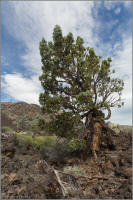
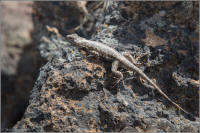
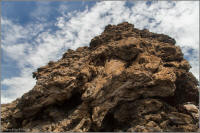
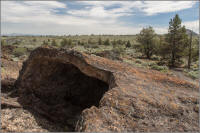
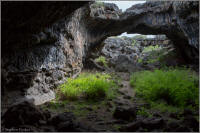
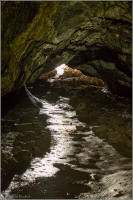
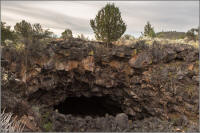
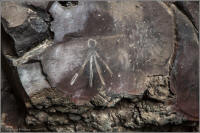
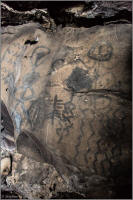
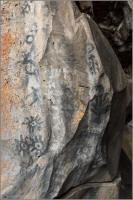
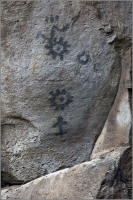
_1K_small.jpg)
